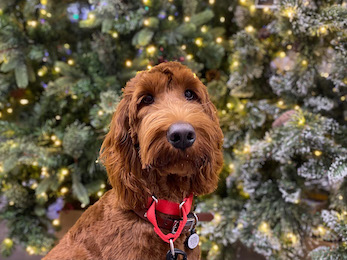One of the more commonly mistaken behaviors in dogs is licking. Most people think of licking as akin to a dog kissing. In some cases, the behavior is a friendly gesture, but the cases that I become concerned about as a Certified Applied Animal Behaviorist involve misunderstandings that can have major consequences. Given the behavior looks topographically similar it can be difficult to discern exactly what a dog is trying to convey. To analyze the message a dog is sending, I look to the environment as well as pay close attention to the details surrounding the behavior. Let’s navigate through the various types of licking.
The “Hi There” Lick
Let’s first consider a nonthreatening lick. Dogs tend to engage in non-threatening or what could be considered friendly licking. I considered this type of lick when the dog approaches the person. It is generally after some period of separation and the lick is relatively more rapid in nature. The person is not doing anything to the dog except for reciprocating the greeting. These are the “safer” type of licks. They can be directed at unknown people but most often are directed at family members with whom a dog has a strong connection. In younger dogs, the licking sometimes accompanies (play) biting or mouthing. This sort of biting is not meant to be aggressive in nature, albeit it sometimes hurts and can be inappropriate. It is just another way for your dog to get your attention and share that attention back. My personal favorite is when a dog’s greeting moves from licking to nibbling. Nibbling is done with the front teeth, is a friendly gesture, and is thought to be maternal in nature. Again, sometimes the nibbling hurts and for some, it is inappropriate given individual family needs, but the message is one of friendly intent.
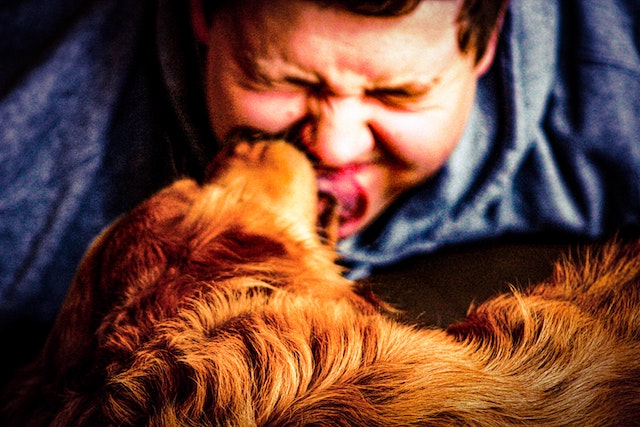
The “Bad Breath”, “Healing a Wound”, or “Grooming” Lick
The “Bad Breath” Lick
Some dogs have a way of humbling their owners with a lick that tells you almost immediately that you need to brush your teeth! This type of lick is slower than the “hi there” lick and is preceded by smelling around a person’s mouth. My dog seems to be climbing into mouths with this type of lick. Dogs initiate contact with the person–usually a family member—first thing in the morning. Most often sniffing is enough to satisfy the dog’s desire for a stinky smell (aka morning breath), but for some licking seems to follow.
The “Healing a Wound” or “Grooming” Lick
The same type of lick can be observed if there is a wound on a person or other pet. A dog’s nose starts the work with some sniffing, then a slow lick follows. I think of this as a “healing a wound” lick. This lick is usually directed at a wound on a family member, including family pets.
A very similar lick can be observed when dogs are grooming one another or a family cat. The dog that is doing the grooming almost appears to be holding the other dog or cat by the paw. Sometimes nibbling also ensues as the licking continues.
All these licks are motivated by the benefits dogs have received across lifetimes. In other words, dogs have evolved to lick in these ways. These licks are normal and are not aggressive in nature, rather they are friendly, loving gestures.
The “Please, Stop” Lick
The next type of licking is where we as humans get it wrong so many times. This type of thing is the crux of my work as it relates to licking. This is a lick that falls within the context of being touched in a way a dog might find aversive. The “Please Stop” lick is exacerbated by the presence of a valued resource but occurs at times when resources are also not present. The lick is often directed at the person’s hand because that is the body part doing the handling. This lick is a polite way of saying, “stop!” These licks are slower and more drawn out in nature. Unfortunately, the examples seem endless and often involve children.
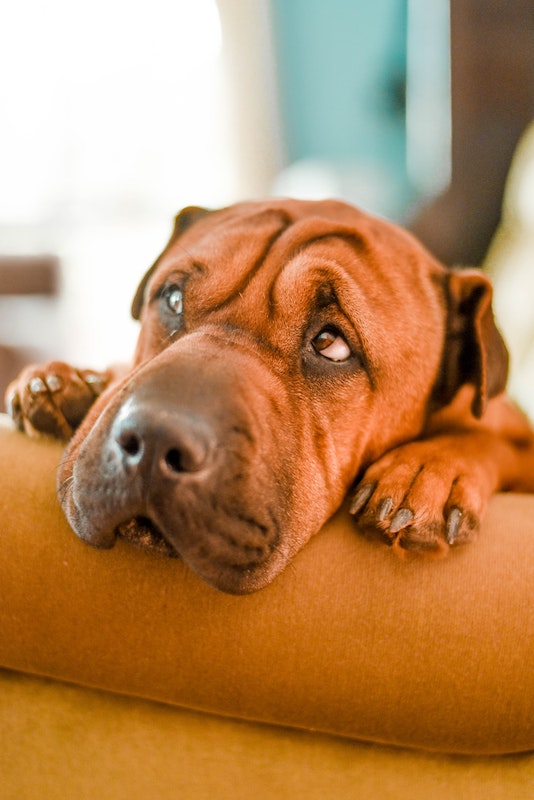
Consider these interactions:
- A small child sitting on the floor with a dog. The dog might be laying in their favorite spot or near their favorite ball. The child begins investigating the dog’s paws touching the toenails. The dog begins licking the child’s hand slowly. At this point, caregivers might assume the dog is being affectionate towards the child but instead, the dog is communicating to the child, “please, stop.” The interaction continues with the lick not resulting in the child stopping. What happens next is so often when I am called because the dog has nipped the child.
- A dog is chewing on their new, favorite bone. The dog owner’s animal-loving grandchild is visiting and begins toddling toward the dog. Once the child gets to the dog, they squat down and begin visually investigating the dog. The dog turns away from the bone and begins slowly licking the child’s chin, keeping an eye on the prized bone. Time seems to freeze for an instant before the dog snaps at the child’s face. The licking could be viewed as affection but instead should be more accurately seen as a polite way of saying “please, go away.” The dog is trying to communicate to the child to leave them alone with their new bone.
- A dog is being groomed, having parts of their body shaved and matted fur removed. As the groomer (or owner who is grooming their own dog) begins shaving or combing out matted fur, the dog slowly licks their arm. Once again, a “please stop” signal that is often ignored or misunderstood.
I personally remember bathing my cocker spaniel as a small child and having her lick my chin. As a young, animal-obsessed child I assumed nothing less than the idea that she was showing me affection with the “kisses” she was giving me. I was wrong and luckily the behavior never escalated with me but looking back she engaged in so many precursors to aggression and had previously snapped at another child. These types of interactions happen so often and not only are they ignored, but they are interpreted by society so incorrectly and in a dangerous way.
Understanding the Environment and the “Please Stop” Lick?
Some environments unintentionally support the behavior escalating beyond licking. Consider what occurs environmentally. Licking serves as a warning to stop. If the licking does not properly “warn” us to stop (i.e., if the behavior of licking does not result in the person stopping what they are doing), the dog’s behavior will escalate into a less polite way of communicating the need. At that point there are a few options for the dog: move away from the person, growl, snap, or bite. All result in the same thing–the person stopping what they are doing. In that instance, the dog’s behavior is shaped.
Let’s dive into the behavioral options the dog has, starting with getting up and leaving. Is leaving even an option or is the dog being restrained? Has it worked in the past? How effortful is it to get up and walk away? Is it painful to get up and walk away? If given the option and it has worked in the past, most dogs walk away. This is the safest option for all involved.
If leaving has not worked in the past, a low growl might be communicated. We could consider similar questions. Has growling worked? Has growling been harshly punished? If it did not work in the past, dogs may try again a few more times and give us the chance to allow the growl to work. If the growl has been harshly punished, growling is an unlikely response. Dogs will wait and continue tolerating what the environment is dishing out (i.e., our behavior as the human in that moment). This might seem reasonable, but we are in fact starting to play with fire. Dogs who have had a history of being shocked are at a much greater risk of severely biting.
Next comes a more overt way of removing the person. If the growl has not worked in the past or worse, was harshly punished, a snap or bite will occur. Sadly, in so many cases, the bite is the first message really “heard” by us. These behaviors almost always “work” to remove the person. The person moves away or stops, sometimes only for a moment. The snap or bite is reinforced and will occur more in the future. Dogs will likely be more efficient, no longer licking, moving away, or growling. Suddenly a polite way of saying, “stop” has turned into an aggressive act. Dogs cannot understand the long-term, possibly life-altering consequences of the behavior, and things quickly get serious.
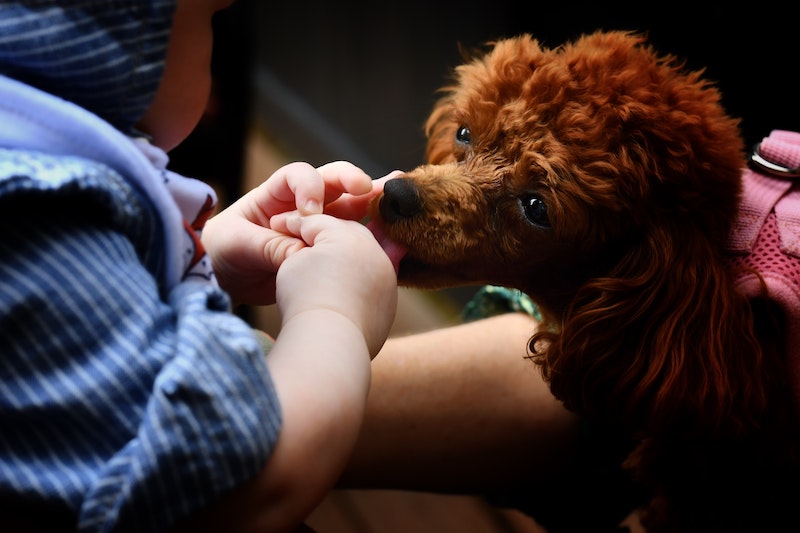
What Can We Do to Avoid a Bite?
If your dog does engage in a “please stop” lick, do not be alarmed or panicked. Remember, that is a behavior that is relatively normal. What is important is to take note of the behavior and the context under which it occurred. At that point, it is time to treat the licking to reduce your dog’s aversion to whatever brought on the “please stop” lick. This involves a lot of classical counterconditioning. Basically, pair the unpleasant activity with something tasty. Let’s consider a “please stop” lick when being groomed. Please note, if your dog has a history of snapping or biting, please contact Beyond the Dog or a professional to help. It is important to look for any signs of discomfort and use a bridge word, bridge, and feed when that occurs.
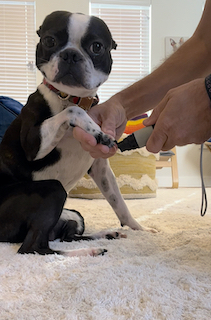
Follow the steps below:
- Start by pairing touch with food. Bridge and feed each touch. In some cases, a touch might be too invasive, and you can start by reaching out but not making contact. Be sure to practice with your dog’s paws, including back paws, ears, mouth, and hindquarters.
- Once your dog is comfortable being touched and you have built up a positive history, repeat step 1 but with relevant tools (e.g., nail trimmers, ear cleaning solution) present.
- Again, once your dog is comfortable it is time to move on. Pick up the tools and feed. Continue until your dog eats without hesitation and there are no signs of concern.
- Hold the tools, approaching your dog’s relevant body part. Bridge and treat anytime discomfort arises. Continue until your dog eats without hesitation and there are no signs of concern. Be patient at this step. It can take several weeks for your dog to become completely comfortable.
- Once your dog is comfortable with you touching a body part with the tool, it is finally time to begin using the tool! Before using the tool, offer a big handful of treats. You can even toss treats on the floor, so the dog is eating as you trim a nail, brush out mats, or clean your dog’s ears. Again, be patient at this step. It can take a long time depending on your dog’s individual history.
The steps above reduce your dog’s concern surrounding grooming but can and should be modified based on the context your dog is concerned about (i.e., when your dog does the “please, stop” lick). Please note: If your dog engages in the “please stop” lick when having their fur pulled or skin grabbed by a young child, the above exercises should be done to “stack the deck” in the favor of your dog never biting a child. In fact, I recommend the exercises as a preventative in homes where babies and toddlers live. Even still, children should be monitored and never allowed to grab or yank at a dog’s fur.
The goal of the exercises is to use classical conditioning to make those experiences pleasant. In turn, the motivation for grooming (or relevant activity) to stop is completely removed. Ideally, your dog seeks out opportunities to be groomed! Instead of ignoring the lick and allowing the naturally occurring environment to shape up dangerous behaviors, you change the narrative. As a well-informed owner, you are taking control of the environment in a way that supports your dog, their behavior, and your lifelong relationship. Who could ask for more?




